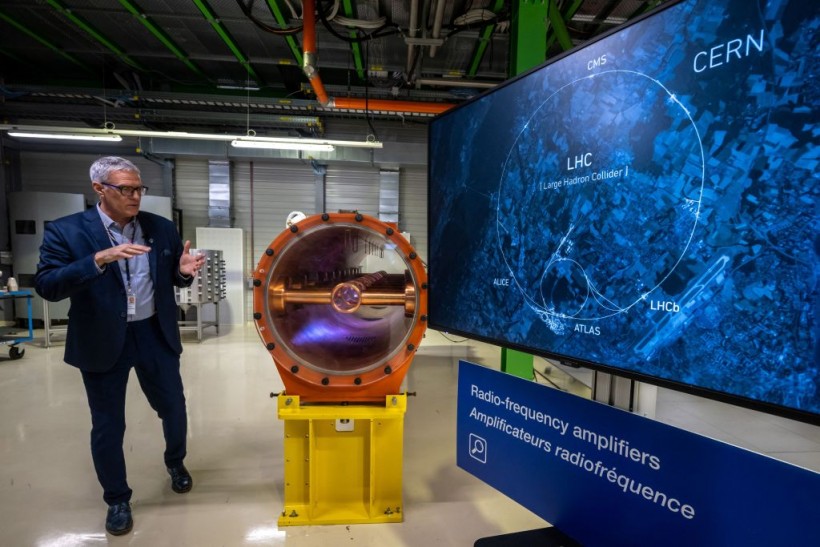Researchers have proposed the construction of an atom smasher that is even larger than the world's biggest particle accelerator at present.
$17 Billion 'Future Circular Collider' Proposed
The Future Circular Collider (FCC), which may cost a whopping $17 billion, is expected to be 91 kilometers in length. This makes it overtake its predecessor, the Large Hadron Collider (LHC), which is 27 kilometers long and situated at the European Organization for Nuclear Research, or CERN, close to Geneva.
Physicists plan to maximize the increased power and size of the FCC to probe the fringes of the Standard Model of particle physics. This theory is presently the best to describe the behavior of the universe's finest components.
Through smashing particles at energies that are even higher, the researchers are hopeful to find forces and particles that are unknown, know why antimatter is outweighed by matter, and examine dark energy and dark matter's nature.
According to Fabiola Gianotti, the director-general at CERN, the FCC will not just boost knowledge regarding nature and physics' fundamental laws; it may also enhance innovations, as novel advanced technologies are necessary to lead to great societal and socioeconomic advantages.
ALSO READ: What's the Large Hadron Collider?
Atom Smashers
Atom smashes, such as the LHC, collide protons with each other at a speed that is near that of light. This takes place while they look for rare decay products that could serve as clues to new forces or particles. This could aid physicists in scrutinizing their understanding of the fundamental building blocks of the universe and their interactions.
While the Standard Model has allowed scientists to come up with notable predictions, physicists are not satisfied with it. They are looking for novel physics that could break such a model. This is due to the fact that the model has great gaps, even if it is currently the most comprehensive one. These caps make it fully incapable of explaining where gravitational forces are from, what dark matter consists of, and why matter is more prevalent in the universe compared to antimatter.
To examine these mysteries, CERN physicists will utilize the FCC's beam energy increase, equivalent to sevenfold, to accelerate particles at speeds that are even higher.
However, the detector is still far from being constructed. The proposals that CERN put forward come as part of a feasibility study's interim report. This study is set to be finished the following year. When it's finished and if the plans for the detector push through, the organization may look for more funding for the project.
While the new collider comes with high hopes, there are still some scientists who are skeptical about whether the machine will lead to the discovery of new physics. Theoretical physicist Sabine Hossenfelder from the Munich Center for Mathematical Philosophy wrote on a 2019 post on X, formerly Twitter, that the FCC would be more expensive compared to the LIGO (Laser Interferometer Gravitational-Wave Observatory) and LHC mixed together. It may not offer a good ROI, adding that there are better things to pursue compared to high-energy physics.
In 2028, state members will be deciding whether the project will receive a green light or not. Then, the machine's first phase could come online by 2045. By the 2070s, the collider may start smashing protons with each other.
RELATED ARTICLE: For the First Time Large Hadron Collider FASER Experiment Reveals Ghost Particle Neutrinos
Check out more news and information on Physics & Math in Science Times.




![Earth's Quasi-Moon Kamo‘oalewa Could Originate From Lunar Surface Not Asteroid Belt [Study]](https://1721181113.rsc.cdn77.org/data/thumbs/full/53275/89/56/50/40/earths-quasi-moon-kamo-oalewa-could-originate-from-lunar-surface-not-asteroid-belt-study.png)










